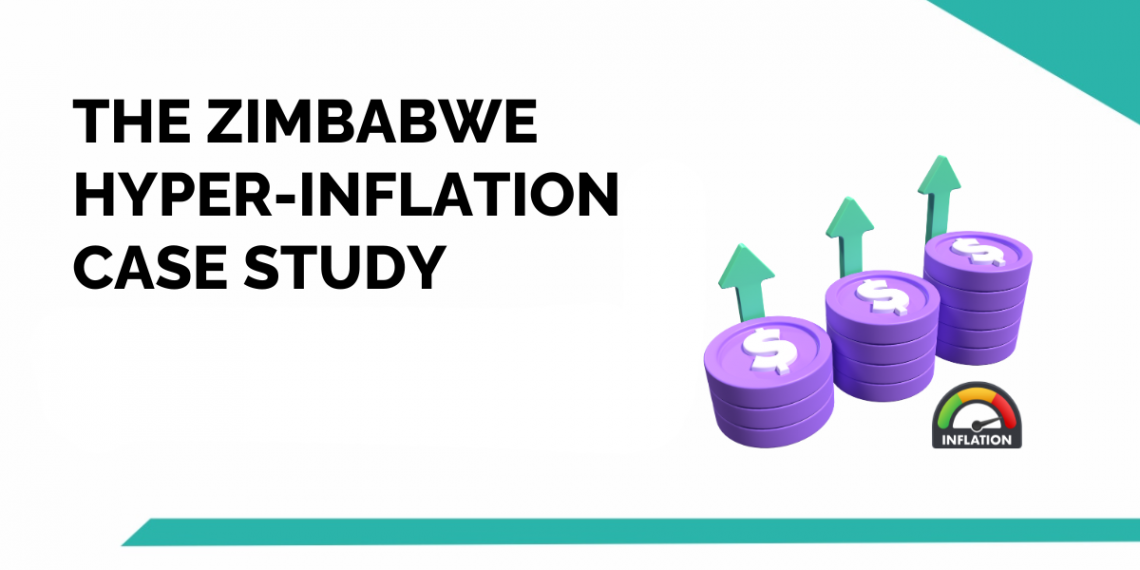When we were in school, one question that popped up in every kiddish mind at least once was- ” Why can’t we print loads of notes and make everyone rich?”- A situation of hyper-inflation
Although there are various theoretical answers to this, and our economics teacher tried their best, many governments have given some practical manuals on what not to do!
And at the top of it is the most recent Zimbabwe Crisis.
Before starting with the Zimbabwean story, let’s understand what HyperInflation means.
Hyperinflation happens when prices shoot up fast, usually more than 50% every month. This can make things like food and fuel much more expensive because there’s not enough supply to meet the demand.
It happens when the economy isn’t producing enough, and the central bank prints too much money. Even though hyperinflation doesn’t happen often, once it starts, it can quickly get out of control. It makes money lose its value fast, causing problems like the economy not growing, product prices changing a lot, and people losing trust in the government’s monetary policies.
There are various reasons for its occurrence- Excessive supply of money or Demand-pull inflation.
Table of Contents
But how did Zimbabwe come into this hyper-inflation situation?
The cycle of destruction started with the monetary policies of Robert Mugabe and his government. In the early 1990s, the Zimbabwe government implemented certain land reforms that were poorly structured, which led to a decline in food production. This happened at a time when the country’s banking sector had already collapsed.
Making things even worse, they were facing sanctions from the IMF and the US due to some of their disastrous policies and lack of confidence.
The banking sector struggled to gather funds for investments and loans, mainly because some powerful people and government officials were misusing funds.
Banks were also hesitant to lend money because they were unsure about the political and financial situation. This led to a big drop in capital growth and economic activity.
To safeguard themselves from the unrest in the state and to protect citizens from starvation, they decided to increase the wages of the Military and also manifold the import of food.
No other government spending was curbed during this time
But to solve this issue, do you know what they did?
They printed notes in excess!
Now comes the great Governance blunder
The Zimbabwe government printed a lot of new money to pay for military actions and to buy food to prevent hunger across the country. This caused prices to go up quickly because there was so much money around.
Trying to fix the falling value of Zimbabwe’s money, the Reserve Bank printed even more money. They said inflation was against the law and changed the money into bigger bills, like Z$100,000,000 and Z$200,000,000. They didn’t update the rates for exchanging money or talk about inflation, honestly to the public. This made people even more worried about the money’s stability.
They even made Z$100,000,000,000,000 (One Hundred Trillion) dollar notes.
The government didn’t tell the truth about how much money they were printing each month. They underreported it by over 20 million dollars every month.
What were its effects?
In 2008, Zimbabwe experienced the second-highest hyperinflation ever recorded. In November 2008, the estimated inflation rate reached a staggering 79,600,000,000%.
People started to starve for basic necessities. They became “billionaire beggars” as their billions were worth pennies, the equivalent of a Bread loaf worth a billion.
The currency lost its worth as people saw its value double in a day. Travel fares were different in the morning and highly inflated in the evening. People tried to replace the Zimbabwean currency with foreign dollars as soon as possible.
People with savings saw everything perish, and the value of assets also kept shrinking.
Banks started to close down, credit facilities got a dent and businesses started shifting to dollars.
So what did they do after all this chaos?
After 2008, the government started to push up some reforms. Finally!
The dollar and Euro were accepted as their official currencies, which helped to stabilize foreign exchange, stabilize prices, and increase confidence in the currency’s value.
The printing of any new notes was stopped.
As a result of this, the inflation rate started to drop considerably in the coming years, hitting 4.3% in July 2018.
Although any new currency was avoided, the minister of finance re-introduced a new regime of currency in 2019, leading to a sudden hit of inflation (417.25% in Oct 2020)
What does this case study teach us?
After peaking at nearly 557% inflation in late 2020, the Zimbabwean dollar has returned to a more modest, double-digit yearly inflation rate.
But even today, the country is being haunted by the ghosts of 2008, with the inflation rate around 150% in June 2023.
This entire case teaches us 3 important things-
- The importance of a central financial body with immense strength and power, even over the government, regarding monetary and financial decisions.
- Corruption must be removed, and capable governance must be established to make educated decisions.
- The importance of a country’s currency and it should be protected to protect the entire nation from such a deep trench.
Conclusion
This case study vividly illustrates why a good economic plan is important and what Hyperinflation can do to an economy. We hope that you now know why “Print notes and make everyone rich” is not logical.
Stay glued with us for more such case studies.
For more market updates, visit StockEdge






